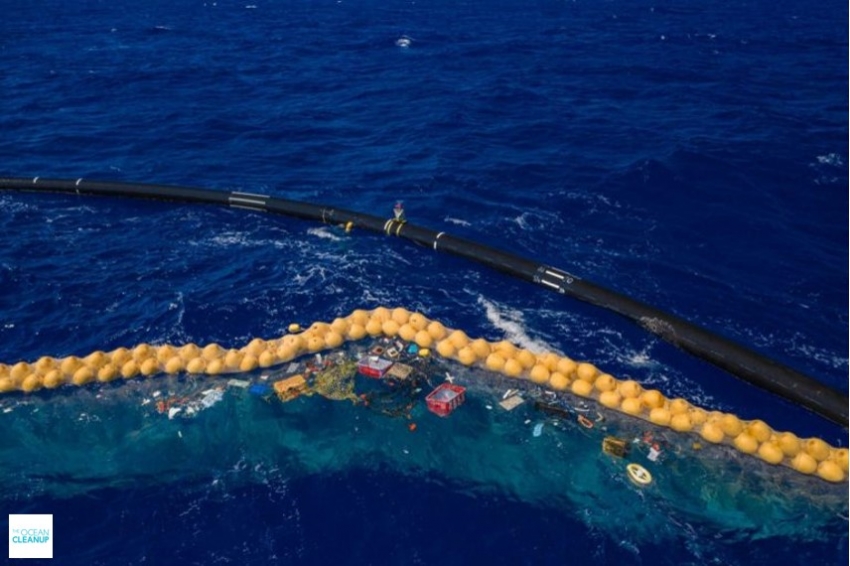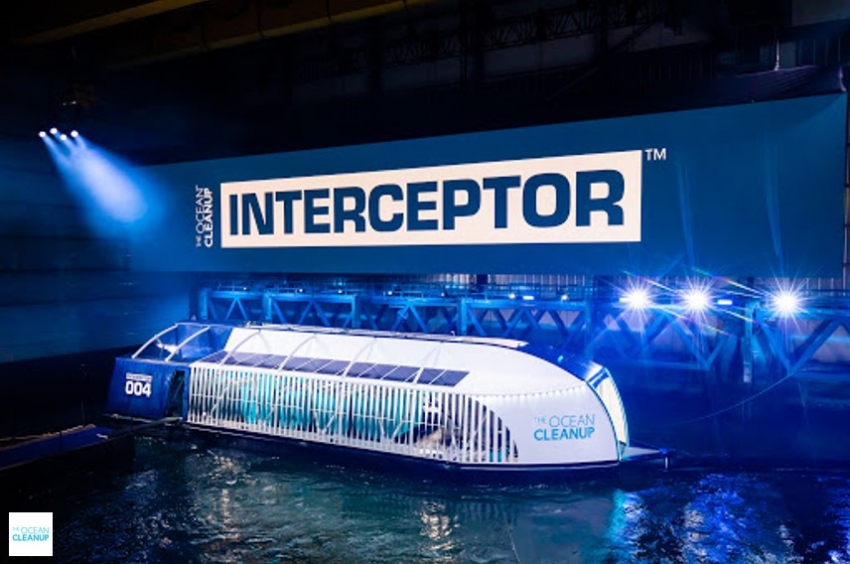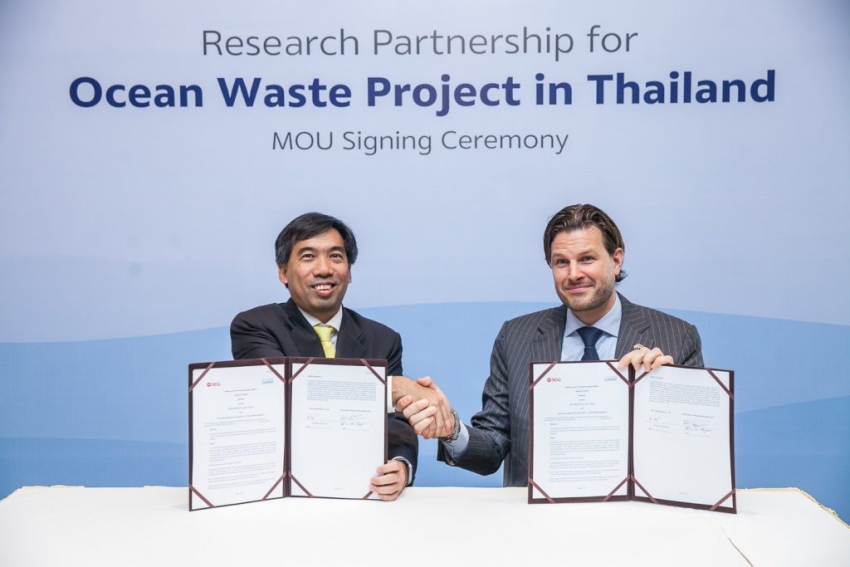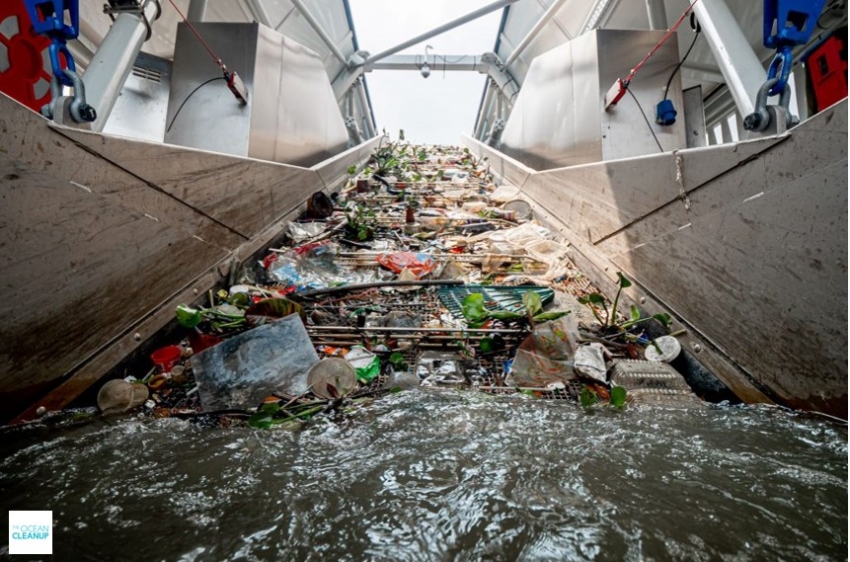Waste that lacks proper and efficient handling has continuously affected the environment, especially the seas and oceans. And it is on course to scale up the impacts, becoming a significant challenge that requires the cooperation of all sectors and levels to work out the solutions. That is why "conserve and sustainably use the oceans, seas and marine resources for sustainable development" is part of the 17 Sustainable Development Goals (SDGs) set forth by the United Nations (UN), and such goals have been used as a holistic framework for global development cooperation effort since 2015.
SCG is at the forefront of recognizing such emergencies and vigorously moving to tackle the issue through several initiatives. Among them is building an alliance network and partnership with The Ocean Cleanup, a Netherlands-based non-profit organization that invented and developed the InterceptorTM, advanced technology to capture waste in the water effectively.
It starts with Great Pacific Garbage Patch
The Great Pacific Garbage Patch is three times the size of France, floating in international waters beyond any national claims. It is estimated that this giant garbage patch could take up to nearly 80,000 years to biodegrade.
That is why an 18-year-old Boyan Slat, CEO and founder of The Ocean Cleanup, an environmental engineering startup, presented his idea at the TEDx conference to get rid of plastic from the oceans by using the massive interceptor to passively collect plastic from the garbage patch utilizing the ocean's current. If the idea works, all the garbage in the patch will disappear in five years.
Such a well-received concept has led to the creation of InterceptorTM, a solar-powered barge that can extract to a maximum of 100,000 kilograms of trash per day and work autonomously 24 hours a day. The solution is run by computer and internet-connected to monitor the system's performance, energy usage, and component health. The InterceptorTM uses the river's natural flow to catch plastic with the help of a floating barrier that is used to direct the garbage into the system. The innovative solution operates without noise or exhaust, making it an eco-friendly choice for the environment and living things.
The creation of InterceptorTM largely stems from the research data saying that 80% of ocean plastic pollution is from rivers, particularly ones that are seriously polluted and lack proper land waste handling. And as the waste flows into the public oceans, it becomes garbage that everyone in the world shares responsibility.
Shared Vision toward Mutual Mission
In Thailand's context, the study conducted by Thailand Development Research Institute (TDRI) found that Thailand's sea waste is mainly from riverside communities, shops, industries, coastal tourism on top of improper landfills. Hence, the waste tackling solution requires a series of measures, especially the land waste management practices, to prevent the garbage from leaking into the oceans. Simultaneously, waste handling in the water sources such as canals, rivers, seas, and oceans is also critical and requires immediate attention.
SCG has initiated Bang Sue Model, an internal waste management project, to encourage employees to be aware of the importance of resource efficiency under the concept "Resource Maximization, Correct Sorting, Proper Disposal."
The internal project's success has expanded to Map Ta Phut communities in Rayong province under the project "Waste-free Community." The project attracted the participation of 25 communities and established ten local waste banks to collect recyclable materials. The project has 2,697 users engaged in the KoomKah application with an astonishing recyclable material balance in the system of over 100 tons, worth 230,000 Baht. (The data collected from April 2019 to December 2020) The number of recyclable materials collected and logged in the system has saved 73,442 kilograms of carbon dioxide equivalent. SCG aims to include more communities and households in the project to advance Rayong province toward a waste-free city in the future.
In addition, SCG also develops innovations to help manage and reduce waste at source as follows:
- Aquonic 600 is a solution that helps turn dirty grey water from toilet and kitchen use into pathogen-free reusable water using biological and electro-chemical processes. The byproduct water is free from disease, color, or odor and is reusable. The innovation is co-created with the Asian Institute of Technology (AIT) under the support of the Bill & Melinda Gates Foundation.
- HDPE-Bone Litter Trap is a solution further developed from the oil boom invented by the Department of Marine and Coastal Resources (DMCR) in 2018. The innovation is made from a superior-grade polyethylene compound of HDPE, which offers increased buoyancy and better waste interception performance along with UV resistance and a lifespan of 25 years. It provides effortless setup and installation on top of recyclability in line with the circular economy.
Next Step Toward Global CollaborationChemicals Business, SCG, has entered into a research and development partnership to tackle ocean waste in Thailand. The signing was conducted by Suracha Udomsak, Vice President and CTO – Innovation and Technology, on 11 November 2019.
"Currently, the river and ocean waste have affected every life on earth. Waste sorting and research and development of waste interception technology in rivers are ways to curtail waste flowing into the oceans. This research collaboration with the expert, The Ocean Cleanup, will enable us to better tackle social and environmental issues. SCG will work with the Department of Marine and Coastal Resources and other relevant agencies to accurately collect data on waste and carry out a feasibility study of making use of marine debris as resources and maximizing its usefulness. SCG has innovations to support the value extraction of waste such as mechanical recycling and chemical recycling," said Suracha Udomsak.
Early this year, SCG has signed a Memorandum of Understanding for the use of the InterceptorTM with the Department of Marine and Coastal Resources (DMCR) and The Ocean Cleanup to use InterceptorTM in Thailand's Chao Phraya River, the country's main river that records the highest waste amount. According to 2017's data, the amount of river debris was recorded at 2,172 tons or an estimate of around 173 million pieces. The number has since dropped to 702 tons (around 42 million pieces) in the next two years, thanks to government measures on removing waste from rivers and oceans.
To date, the innovations “InterceptorTM” are currently deployed in Indonesia, Malaysia, Vietnam, and the Dominican Republic in the countries' severely polluted water sources. The Ocean Cleanup estimated that the solar-powered waste interception innovation could remove 70 million kilograms of waste by 2025.
Watch the video here https://www.scgchemicals.com/en/news-media/media/video/83








